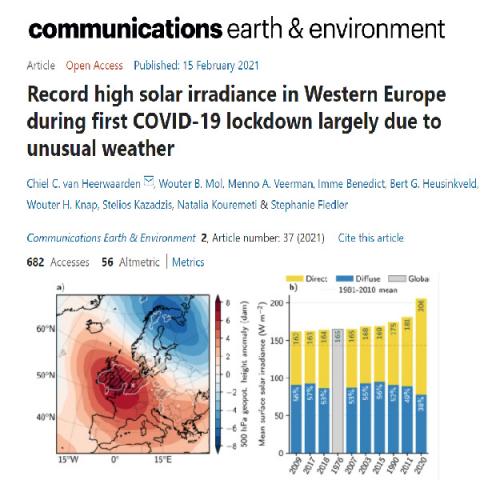National Facilities


Record high solar irradiance in Western Europe during first COVID-19 lockdown largely due to unusual weather.
Spring 2020 broke sunshine duration records across Western Europe. The Netherlands recorded the highest surface irradiance since 1928, exceeding the previous extreme of 2011 by 13%, and the diffuse fraction of the irradiance measured a record low percentage (38%). The coinciding irradiance extreme and a reduction in anthropogenic pollution due to COVID-19 measures triggered the hypothesis that cleaner-than-usual air contributed to the record.
Based on analyses of ground-based and satellite observations and experiments with a radiative transfer model, van Heerwaarden et al. estimate a 1.3% (2.3 W m−2) increase in surface irradiance with respect to the 2010–2019 mean due to a low median aerosol optical depth, and a 17.6% (30.7 W m−2) increase due to several exceptionally dry days and a very low cloud fraction overall.
The study, published on Nature Communications Earth & Environment, analyses show that the reduced aerosols and contrails due to the COVID-19 measures are far less important in the irradiance record than the dry and particularly cloud-free weather.
You can read the full article here.












